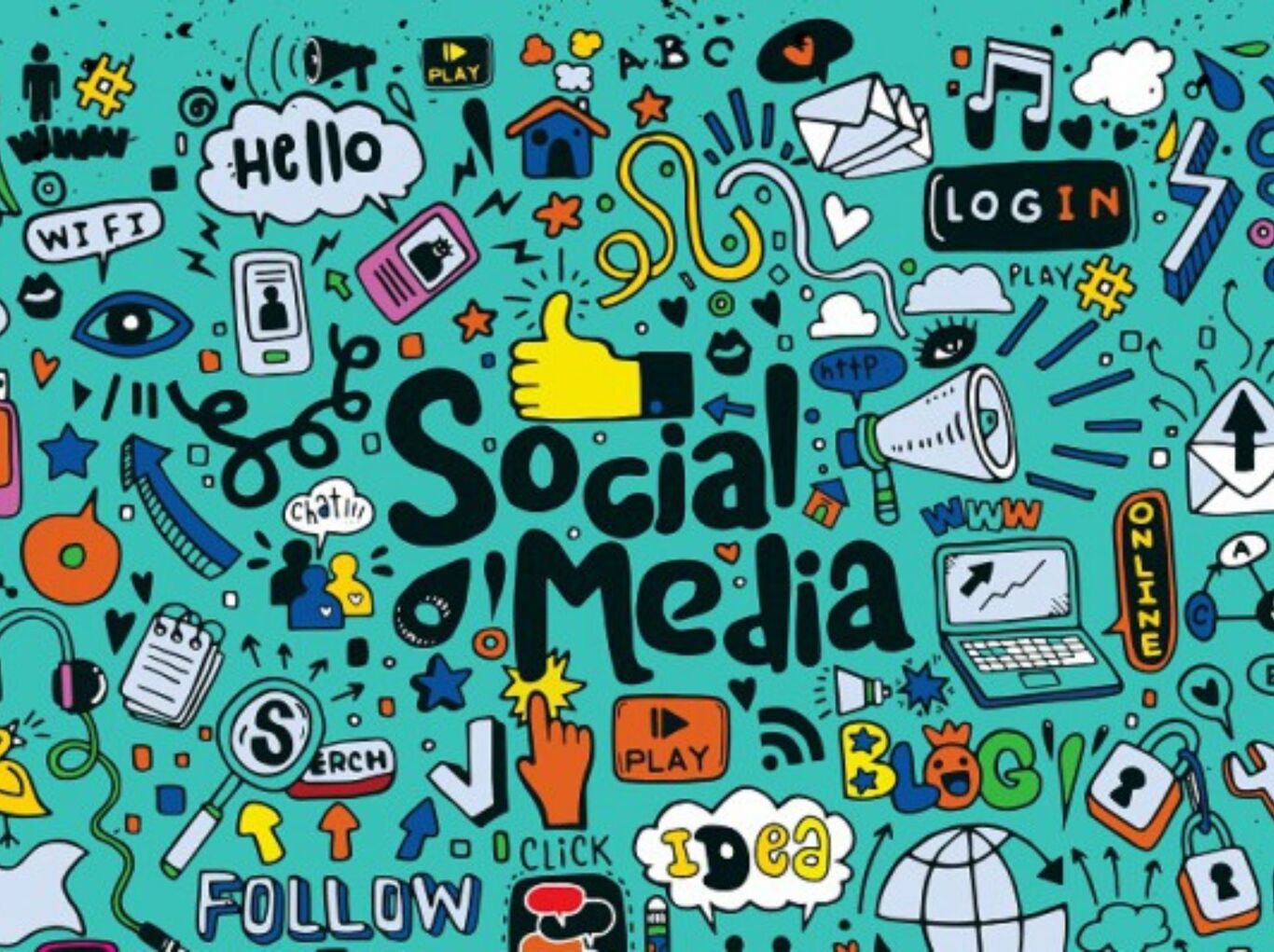Five Categories of Advertising Intelligence Platforms: From Dashboards to Prescriptive AI

You're a CMO trying to solve a critical problem: Your marketing data is scattered across 8+ platforms. Your team spends 40% of its time pulling reports instead of optimizing. Your decision cycles are 2-3 days when competitors operate in 15 minutes. And your CFO is asking: "Why isn't our marketing getting better?"
So you start researching solutions. And immediately, you're drowning in options.
There are dashboard BI tools (Tableau, Looker, Power BI). There are data integration platforms (Supermetrics, Improvado). There are CDPs (Segment, mParticle). There are AI tools (ChatGPT). And there are these new "prescriptive" platforms (Intellsys AdGPT, Albert, Beedie).
What's the difference? Which one do you need? Which one will actually solve your problem?
This guide cuts through the noise. We'll break down all 5 categories, explain what each does well and poorly, show you how they compare across critical dimensions, and help you decide which is right for your situation.
The 5 Categories Explained
Category 1: Dashboard Business Intelligence (BI) Tools
Market Leaders: Dashboard Tools like Tableau (Salesforce), Looker (Google), Power BI (Microsoft), Qlik
Market Size (2025): $62 billion
Growth Rate: Declining 5% YoY in advertising use cases
Typical Cost: $50-150/user/month
How They Work
- Connect to data sources (databases, APIs, data warehouses, ad platforms via third-party connectors)
- Create flexible dashboards tailored to your business questions
- Users explore data, find patterns, generate insights
- Manually decide what to do with insights
What They Do Well
- Extreme flexibility: Build any dashboard you want. Customize to exact specifications.
- Exploratory power: Excellent for ad-hoc analysis, discovering unexpected patterns
- Mature ecosystem: Established best practices, extensive training, large user communities
- Deep technical capability: SQL, data modeling, calculated fields—unlimited depth
- Integration breadth: Connect to virtually any data source with custom connectors
- Cost-effective at scale: If you're already a Salesforce/Google/Microsoft customer, adds value
What They Do Poorly
- Slow to implement: Setup takes 2-4 weeks minimum. Dashboards take another 2-4 weeks.
- Steep learning curve: Requires SQL, data modeling, or expensive training. Not for all skill levels.
- Interpretation required: Shows data, doesn't tell you what to do. You must decide actions.
- Decision cycle: 2-3 days minimum (analyze → interpret → decide → implement)
- Real-time is expensive: Requires custom engineering and dedicated infrastructure for real-time data
- Not domain-specific: Generic BI, no advertising-specific logic. You provide all the intelligence.
Best For
- Analytics teams with SQL and data modeling expertise
- Organizations that need flexible, custom analysis
- Companies exploring data without known questions upfront
- Teams that already own Tableau, Looker, or Power BI
Verdict
Excellent for exploratory analysis and reporting. Insufficient for operational advertising decisions that need speed and prescriptive guidance.
Category 2: Marketing Data Integration Platforms
Market Leaders: Supermetrics, Improvado, Adverity, Funnelytics
Market Size (2025): $35 billion
Growth Rate: 8% CAGR
Typical Cost: $500-2,000/month (based on data volume)
How They Work
- Connect to multiple ad platforms (Google Ads, Meta, Amazon Ads, etc.)
- Normalize metrics across platforms (handle different terminology, units, definitions)
- Create unified dashboards and reports
- Export to spreadsheets, BI tools, or data warehouses
- You decide what to do with the unified data
What They Do Well
- Data unification: Solves the "data silo" problem. All platforms in one place.
- Time savings: Reduces manual data export/import work by 30-50%
- Pre-built dashboards: Common reports already built (multi-channel performance, channel comparison, etc.)
- Easier than raw BI: Pre-normalized data means less custom setup than Tableau/Looker
- Export flexibility: Send data to Sheets, BI tools, data warehouses, email
- Good for reporting: Monthly/weekly reports are much easier
What They Do Poorly
- Still dashboard-based: Shows data but doesn't recommend actions
- Not prescriptive: No AI, no recommendations, no business logic
- Interpretation required: You still need to analyze and decide
- Limited real-time: Updates hourly or daily, not minutes
- No domain logic: Doesn't understand advertising-specific dynamics (audience saturation, creative fatigue, etc.)
- Decision cycle: Still 1-2 days (data aggregation → interpretation → decision)
Best For
- Marketing ops teams managing multi-platform data
- Organizations overwhelmed by data silos
- Teams that need unified reporting but don't need prescriptive recommendations
- Companies wanting to feed clean data to BI tools
Verdict
Solves the reporting problem. Doesn't solve the decision-making speed problem.
Category 3: Customer Data Platforms (CDPs)
Market Leaders: Segment, mParticle, Tealium, Lytics, Treasure Data
Market Size (2025): $12 billion
Growth Rate: 12% CAGR
Typical Cost: $1,000-5,000/month (based on user profiles)
How They Work
- Centralize first-party customer data (website, app, CRM, email, offline)
- Create unified customer profiles (identity resolution, data stitching)
- Enable audience activation across channels (marketing, email, ads)
- Provide consent and privacy compliance
- Send audiences to ad platforms, marketing tools
What They Do Well
- First-party data infrastructure: Essential as third-party cookies fade
- Unified profiles: Single source of truth for customer data
- Audience activation: Segment audiences and activate across channels
- Privacy compliance: Built-in consent, GDPR, CCPA handling
- Real-time audience sync: Push audiences to platforms in real-time
- Identity resolution: Handle cross-device, cross-platform tracking
What They Do Poorly
- Not designed for advertising intelligence: No ad-specific analysis or optimization
- No prescriptive AI: Doesn't recommend campaigns, budgets, or strategies
- Data infrastructure, not decisions: Solves data plumbing, not marketing optimization
- Expensive at scale: Cost scales with customer database size
- Requires data science: Needs technical team to build audiences and segments
- Limited analytics: Doesn't answer "why did my CAC rise?" or "what should I do?"
Best For
- Organizations building customer data infrastructure
- Companies transitioning to first-party data (post-cookies)
- Teams focused on audience activation and segmentation
- Enterprises needing GDPR/CCPA compliance
Verdict
Critical for data infrastructure and audience activation. Doesn't help with advertising intelligence or decision-making.
Category 4: Generative AI Tools
Market Leaders: ChatGPT (OpenAI), Perplexity (Perplexity AI), Google Gemini, Claude (Anthropic)
Market Size (2025): Growing rapidly, but not classified as "advertising intelligence"
Typical Cost: $20/month (ChatGPT Plus) to $600+/month (enterprise)
How They Work
- User asks a question in natural language
- Large language model (LLM) generates a conversational response
- User gets answer based on LLM's training data (which has a knowledge cutoff)
- System has no access to user's actual data or ad accounts
What They Do Well
- Conversational interface: Ask questions naturally, get conversational answers
- General knowledge: Can answer virtually any question about marketing, strategy, tactics
- Accessible: No technical expertise needed. Anyone can use it.
- Brainstorming and ideation: Great for "what should we test?" or "content ideas for X"
- Learning and research: Explain concepts, provide frameworks, teach
- Cheap and fast: Instant, low cost per query
What They Do Poorly
- No access to your data: Can't see your actual campaign performance, metrics, or results
- No platform integration: Can't connect to Google Ads, Meta, Amazon, CRM, etc.
- Hallucinations: Generates confident wrong answers (e.g., "Your Meta audience should be 100M people")
- Not prescriptive: Gives generic advice, not specific to your situation
- No business context: Doesn't understand your unit economics, product, market
- Knowledge cutoff: Training data is months or years old. Misses recent changes.
- No continuous learning: Doesn't learn from your outcomes or improve
Best For
- Brainstorming and ideation
- Learning about marketing concepts
- General research and writing
- Non-technical team members exploring ideas
- Content generation
Verdict
Excellent for learning and brainstorming. Useless for operational marketing decisions tied to your real data.
Category 5: Prescriptive AI Platforms
Market Leaders: Intellsys AdGPT, Albert, Beedie, others emerging
Market Size (2025): $38 billion
Growth Rate: 35% CAGR (fastest-growing category)
Typical Cost: $1,000-10,000/month (based on ad spend and data volume)
How They Work
- Real-time data ingestion from 200+ marketing platforms (Google, Meta, Amazon, CRM, DWH, GA4, etc.)
- ML models analyze situation and diagnose root causes
- Prescriptive AI engine generates ranked recommendations with business impact
- System projects expected outcomes (CAC reduction, ROAS improvement, etc.)
- Optional execution layer: Automatically implement recommendations with governance
What They Do Well
- Real-time data: Updated hourly from all platforms automatically
- Prescriptive: Tells you exactly what to do (not just insights)
- Outcome-focused: Tied to CAC, ROAS, LTV, revenue—business metrics
- Conversational: Ask questions in English, get specific recommendations
- Domain-specific: Understands advertising dynamics (audience saturation, creative fatigue, etc.)
- Decision speed: 6-10 seconds from question to recommendation vs. 2-3 days
- Continuous learning: Learns from outcomes, improves recommendations
- Outcome projections: "Expected CAC reduction: 25%, timeline: 48 hours"
- Multi-platform context: Understands cross-channel dynamics and cannibalization
What They Do Poorly
- New category: Less mature than BI tools. Still evolving.
- Requires data quality: Works best with clean, complete data
- Higher cost: More expensive than traditional tools (justified by ROI)
- Integration complexity: Requires OAuth connections to all platforms
- Learning curve: Different mental model than BI tools
Best For
- Performance marketing teams
- Organizations prioritizing decision velocity
- Multi-channel marketing (Google, Meta, Amazon, etc.)
- Teams under pressure to improve CAC and ROAS
- Ventures needing to scale fast
- Any team where speed = competitive advantage
Verdict
The future of advertising intelligence. Most powerful for operational marketing decisions tied to real outcomes.
Detailed Comparison Matrix
| Dimension | BI Tools | Data Integration | CDPs | Generative AI | Prescriptive AI |
|---|---|---|---|---|---|
| Setup Time | 2-4 weeks | 1-2 weeks | 2-4 weeks | Minutes | 1-2 hours |
| Learning Curve | Steep (SQL) | Moderate | Moderate-steep | Flat | Flat |
| Real-Time Data | ❌ (24-48 hrs) | ⚠️ (Hourly) | ✅ (Real-time) | ❌ (No data) | ✅ (Hourly+) |
| Decision Speed | 2-3 days | 1-2 days | N/A (not decisions) | Instant (generic) | 15 minutes |
| Prescriptive | ❌ | ❌ | ❌ | ⚠️ (Generic) | ✅ (Domain-specific) |
| Your Data Access | ✅ | ✅ | ✅ | ❌ | ✅ |
| Business Outcomes | ⚠️ (Indirect) | ⚠️ (Indirect) | ❌ | ⚠️ (Generic) | ✅ (Direct) |
| Domain Expertise | ❌ | ⚠️ (Data only) | ❌ | ❌ (Generic) | ✅ (Advertising) |
| Cost | $1-5K/mo | $500-2K/mo | $1-5K/mo | $20-600/mo | $1-10K/mo |
| Best For | Exploration | Reporting | Audience activation | Brainstorming | Operational decisions |
Decision Tree: Which Category Do You Need?
Question 1: Are you drowning in data silos?
- Yes → Start with Data Integration (consolidate first)
- No → Go to Question 2
Question 2: Do you need to activate audiences in real-time?
- Yes → Add CDP (for audience infrastructure)
- No → Go to Question 3
Question 3: Do you need fast, prescriptive marketing decisions?
- Yes → Prescriptive AI (primary tool)
- No → Go to Question 4
Question 4: Do you need flexible, exploratory analysis?
- Yes → BI Tool (Tableau, Looker, Power BI)
- No → Go to Question 5
Question 5: Are you brainstorming strategies or learning concepts?
- Yes → Generative AI (ChatGPT, Perplexity)
- No → Revisit earlier questions
Real-World Scenarios
Scenario 1: E-Commerce Brand (₹50L/year ad spend)
Problem: Multiple ad platforms, scattered data, CAC rising, decision cycles slow
Solution Stack:
- Data Integration (Supermetrics or Improvado) - Consolidate data
- Prescriptive AI (AdGPT) - Make fast decisions
- Optional BI Tool (Power BI) - For exploratory analysis by analytics team
Why not:
- CDP: Not needed yet (don't have complex customer data requirements)
- ChatGPT: Can't make decisions tied to your real data
Expected Outcome: CAC reduction 25-35%, decision cycles 2-3 days → 15 minutes
Scenario 2: SaaS Company (Complex customer journey)
Problem: Long sales cycle, multi-touch attribution broken, CAC unclear, high MQL-to-SQL drop
Solution Stack:
- CDP (Segment or mParticle) - Unify customer data
- Prescriptive AI (AdGPT) - Make fast decisions on channel allocation
- Data Integration (optional) - Consolidate ad platform data
- BI Tool (optional) - Deep exploratory analysis
Why not:
- ChatGPT: Can't see your sales pipeline or customer journey
- Start with CDP not Prescriptive AI (first fix data infrastructure)
Expected Outcome: Better attribution, clearer CAC by channel, 20-30% efficiency improvement
Scenario 3: B2B Marketplace (Multi-platform, many campaigns)
Problem: 10+ campaigns across Google, Meta, LinkedIn. Overlapping audiences. Budget allocation unclear. The team was overwhelmed.
Solution Stack:
- Prescriptive AI (AdGPT) - Primary tool for recommendations
- Data Integration (Improvado) - Unified reporting
- BI Tool (Power BI) - Executive dashboards
Why not:
- CDP: Not priority (audience structure is simpler)
- ChatGPT: Can't optimize multi-platform campaigns
Expected Outcome: Campaign overlap eliminated, budget allocation optimized, decision cycles 10x faster
Scenario 4: Small Brand Testing Channels (₹10L/year spend)
Problem: Trying different channels, unclear what works, team is small
Solution:
- Prescriptive AI (AdGPT) - Get recommendations without building complex infrastructure
- Data Integration (optional) - Later, as you scale
Why not:
- BI Tool: Overkill for early stage (too much setup)
- CDP: Not relevant yet
- ChatGPT: OK for brainstorming, but can't optimize real campaigns
Expected Outcome: Faster learning cycles, identify winning channels 4-6 weeks sooner
The Evolution Path: How Organizations Typically Build
Stage 1 (Early): Generative AI for brainstorming + Google Sheets + manual tracking
Stage 2 (Growing): Add Data Integration to consolidate platforms
Stage 3 (Scaling): Add Prescriptive AI for operational decisions
Stage 4 (Mature): Add BI Tool for exploratory analysis + CDP for audience infrastructure
Stage 5 (Advanced): Prescriptive AI + BI + CDP + Data Integration = complete stack
Reality: Most organizations don't need all 5. Start with 1-2 that solve your current problem.
Key Takeaways
If you're deciding between these categories:
- For operational advertising decisions → Prescriptive AI (Category 5)
- For reporting and consolidation → Data Integration (Category 2)
- For audience activation → CDP (Category 3)
- For exploratory analysis → BI Tool (Category 1)
- For brainstorming → Generative AI (Category 4)
Most Important Insight:
The winning stack for 2025-2027 is Prescriptive AI + Data Integration + BI Tool.
- Prescriptive AI makes daily operational decisions
- Data Integration consolidates data
- BI Tool provides exploratory analysis
Everything else is optional based on your use case.
What To Do Now
For CMOs:
- Talk with marketing technology specialist
- Get recommendation for your specific situation
- Understand implementation timeline
For Technical Teams:
- Prescriptive AI: 14-day trial (full access)
- Data Integration: 7-day trial
- BI Tool: Usually 30-day trial








